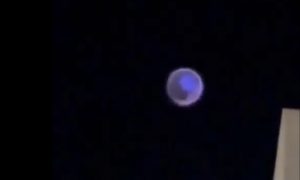
NATO Shows Interest in Ukrainian Acoustic Detection Networks for Air Defense
The defense ministries of some NATO countries have highly praised the potential of acoustic air threat detection systems based on the experience of using the Ukrainian Zvook and Sky Fortress systems.
The Economist reported on this.
After the Ukrainian systems successfully proved themselves on the battlefield, the ministries of defense of several NATO countries began purchasing acoustic equipment for their national air defense systems.
The European defense giant Thales has begun work in this area and plans to present its own acoustic network to detect aerial threats next year. And the Polish company Advanced Protection Systems has resumed work on a similar system.
According to General James Hecker, Commander of the U.S. Air Force in Europe, the Ukrainian experience is at the heart of this excitement. He describes the Ukrainian innovation in acoustic monitoring as “extraordinary.”
Zvook
One of the Ukrainian systems that has been highly praised by Western militaries is Zvook. It is a hardware and software system capable of acoustically detecting cruise missiles, helicopters, drones, and fighter jets at low and medium altitudes.
The system consists of a network of microphones placed throughout Ukraine. The micros record ambient sounds, which are then processed by special software that analyzes and separates coincidences with the sounds of cruise missiles, planes, and drones.
The Times reports that the Ukrainian system is capable of detecting a drone at a distance of up to 5 km and a cruise missile at a distance of 7 km. These parameters are much lower than conventional radars, but such sensors are much cheaper and invisible to the enemy.
The cost of each system is about $500, so they are installed in large numbers, creating a high coverage density, which improves the accuracy of detection. The microphones installed on the ground are powered by rechargeable batteries and solar panels. The collected data is transmitted via a satellite network.
To ensure such a range, Zvook developers installed curved “acoustic mirrors” with a diameter of half a meter, which concentrate sound waves on the microphone. Most listening stations have a coverage angle of about 200°.

According to the publication, data on detected targets is delivered to Delta’s control system in less than 12 seconds. The system’s operator, Sergeant Marian Sulym, told reporters that the system’s false alarm rate is currently about 1.6%. For final verification, Delta users receive a nine-second recording of the corresponding sound.
Soon, the accuracy of Zvook’s work should increase significantly. For more efficient triangulation of the sound source, the developers of the system are creating a new four-microphone setup. It should be able to determine the direction of sound origin with an accuracy of about 5°, which will allow the target to be located accurately without the need to turn on ground radar.
Sergeant Sulym said that the military is to receive a batch of 15 upgraded units for testing next month.
Sky Fortress
Another Ukrainian acoustic-detection network, Sky Fortress, is less well-known. One of the few experts familiar with it, Riki Ellison, founder of the Missile Defense Advocacy Alliance (MDAA), spoke to The Economist about its capabilities.
According to him, the Sky Fortress system has become so large-scale and “so damn good” that it now detects most of the Russian attack drones used against Ukraine.
A few weeks ago, the Sky Fortress system was demonstrated privately at a military training ground in Europe. Representatives of 11 NATO countries were shown a flight of simulated cruise missiles and drones that were easily detected and tracked.
SUPPORT MILITARNYI
Even a single donation or a $1 subscription will help us contnue working and developing. Fund independent military media and have access to credible information.


 Urich
Urich 
 Андрій Харук
Андрій Харук 
 Контужений Безпілотник
Контужений Безпілотник 

 Центр ініціатив ПЖ
Центр ініціатив ПЖ 



 Vadim Kushnikov
Vadim Kushnikov 
 Андрій Тарасенко
Андрій Тарасенко 
 Юрій Юзич
Юрій Юзич 
 Віктор Шолудько
Віктор Шолудько 
 Роман Приходько
Роман Приходько 




